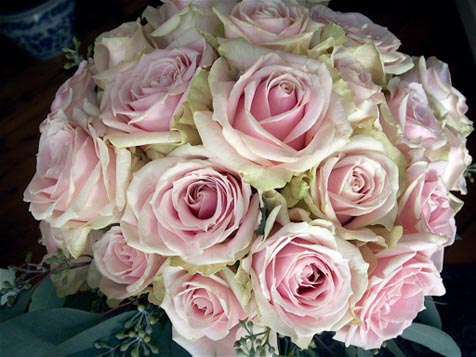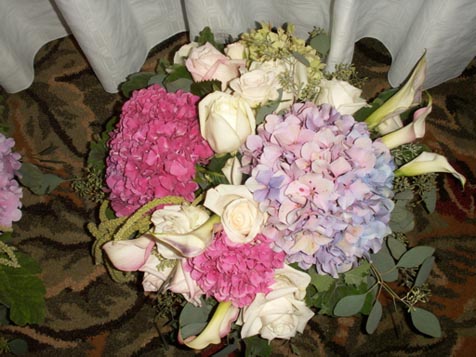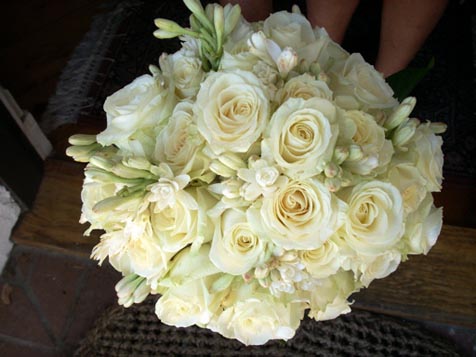Language of Love
{Say "I Love You" with Your Wedding Flowers}

Lovers have shared their feelings for each other through the meaning of flowers for centuries. Flowers as symbols have been noted in Egyptian inscriptions and in ancient Chinese writings. In the 1600s, Turkish lovers communicated secretly via “talking bouquets” called tussie-mussies. The trend of flowers as a declaration of love found its way to Europe, and in 1819, Madame Charlotte de la Tour wrote what became a popular flower dictionary called Le Language des Fleurs to help decipher messages. But it was the romantic Victorians who coined the term floriography and subsequently published many books with elaborate lists of flowers and their meanings.
During the Victorian era, flowers flourished as love notes and were the rave among sweethearts. A gentleman would dispatch a posy or nosegay to his love interest and, with any luck, his object of desire would thumb through her flower book and decipher his message. Peonies hinted at secret love; heliotropes declared devotion; irises proclaimed hope for reciprocal love. Flowers were also sent to flatter and compliment a loved one’s beauty or to beg a rendezvous with her.
Although today flowers have lost some of their parlor-game-like charm, their sentiments are universal. Flowers express what is in our hearts. A dozen roses is a bold statement of love usually presented on birthdays or anniversaries. Bringing your hostess a bouquet thanks her in advance for the invite to the occasion. Flowers play an important role in holidays and ceremonies, but nothing surpasses the importance and beauty of flowers selected for a wedding-especially the bride’s bouquet.

A wedding is every bride’s chance to express her individuality. The flowers she picks set the mood for her big day. Many brides have imagined their wedding flowers since childhood. She may choose flowers by color, scent, drama, or family tradition. But a unique idea is to select flowers for their meaning. They can represent the love a couple has for each other. Yarrow for everlasting love. Lavender to celebrate devotion. Roses for love and purity. A combination of flowers such as larkspur to signify joy and ivy for wedded love can set the theme for an entire wedding. Or focus can be on the bride’s bouquet with one type of flower such as orchids, which represent rare beauty. A groom’s boutonnire made of violets promises faithfulness. Centerpieces featuring crocus highlight gladness.
However you chose to say it with flowers, don’t forget to share the meaning of your flowers with your betrothed, family, and friends by noting their meaning on your invitations, menu, wedding favors, or keepsakes. Remember, the language of love lasts a lifetime.
Suggested reading: The Meaning of Flowers: Myth, Language & Lore by Ann Field and Gretchen Scoble.

Significance of Flowers
Alstromeria: Wealth, prosperity, fortune
Bay Laurel: Glory
Bells of Ireland: Good luck
Carnation: Pure love
Chamomile: Patience
Daisy: Innocence
Gardenia: Grace and artistry
Heather: Admiration, protection, passion
Ivy: Wedded love
Lamb’s Ears: Support
Larkspur: Joy
Lavender: Devotion
Lily of the Valley: Return of happiness
Magnolia: Dignity
Myrtle: Love
Orange Blossom: Purity
Orchid: Rare beauty and ecstasy
Oregano: Happiness
Pansy: Friendship
Queen Anne’s Lace: Protection
Rosemary: Fidelity and remembrance
Rose: Love and purity
Sage: Domestic virtue
Snowdrop: Hope
Sweet Pea: Lasting pleasure
Thyme: Courage and strength
Tulip: Declaration of love
Violet: Faithfulness
Yarrow: Everlasting love
4•1•1
Trace Robinson is an area landscape artist and floral designer who specializes in weddings. She is available for consultations at 969-5714 or TraceRobinson.com.
Denise Iest is a freelance writer and editor who writes Food & Home’s Garden Column with her sister, Trace Robinson. Email DeniseIest@hotmail.com.


